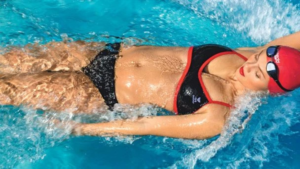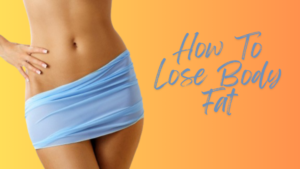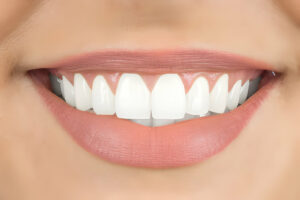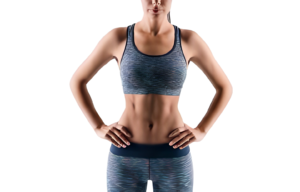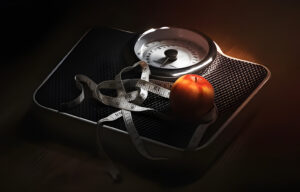The image of a ballerina is often associated with grace, strength, and an incredibly lean physique. This has led to the rise of the “Ballerina Diet,” a popularized eating plan that promises weight loss by mimicking what dancers supposedly eat. But before you lace up your ballet shoes and reach for a cracker, let’s delve deeper into this diet and see if it lives up to the hype.
Table of Contents
ToggleUnveiling the Ballerina Diet: A Look at a Dancer’s Nutritional Approach
There’s no single, official “Ballerina Diet.” However, various versions exist online and in popular culture, often promoting low-calorie, low-carb meals with a focus on lean protein and vegetables. While some dancers may follow such a plan, it’s important to remember that professional ballerinas have highly individualized dietary needs created in consultation with registered dietitians. These plans factor in their rigorous training schedules, ensuring they have enough energy to perform at their peak.
Breaking Down the Ballerina Diet: What Can You Eat?
Here’s a general breakdown of what a typical Ballerina Diet might include:
- Protein: Lean meats (chicken, fish), eggs, tofu
- Vegetables: Leafy greens, broccoli, asparagus
- Fruits: Limited portions of berries, apples
- Grains: Small amounts of whole-wheat bread, brown rice (in some versions)
- Dairy: Low-fat yogurt, limited cheese (in some versions)
Foods typically restricted:
- Processed foods
- Sugary drinks
- Unhealthy fats
- Starchy carbohydrates (pasta, white bread)
Important Note: This is just a simplified example. Specific details and restrictions can vary widely.
Balanced Diet for Dancers: Fact or Fiction?
While the Ballerina Diet emphasizes some healthy principles (lean protein, vegetables), there are crucial considerations:
- Sustainability: The restrictiveness of the diet can be challenging to maintain long-term, leading to yo-yo dieting and potential nutrient deficiencies.
- Individual Needs: Ballerinas have particular energy demands. This diet might not provide enough fuel for someone with a less active lifestyle.
- Muscle Building: Limited carbohydrates can hinder muscle growth and recovery, which is vital for dancers and everyone alike.
Sources:
Can the Ballerina Diet Help You Achieve Your Weight Loss Goals?
Any restricted diet, in theory, can cause you to lose weight in the short term by reducing your caloric intake. However, the drawbacks of the ballerina diet could result in:
- Muscle Loss: Your body may break down muscle for energy if you consume fewer calories and fewer carbohydrates, which could affect your metabolism and ultimately impede your efforts to lose weight.
- Nutrient Deficiencies: It can be difficult to obtain all the vital vitamins and minerals your body needs while you’re under tight constraints.
- Unhealthy Relationship with Food: The rigid structure might lead to unhealthy eating habits and cravings.
Ballerina Nutrition: Fueling Performance and Stamina
Professional ballerinas prioritize a balanced diet that provides sustained energy throughout their demanding training. This often includes:
- Complex carbohydrates: Whole grains, sweet potatoes, and fruits (in moderation) provide energy for long rehearsals.
- Healthy fats: Avocados, nuts, and seeds offer satiety and support overall health.
Sources:
Is the Ballerina Diet Safe? Separating Fact from Fad
The Ballerina Diet can be unhealthy and unsustainable for most people. The lack of variety, potential nutrient deficiencies, and restrictive nature can lead to:
- Fatigue and low energy
- Muscle weakness
- Difficulty concentrating
- Increased risk of eating disorders
If you’re looking to lose weight or improve your diet, it’s best to consult a registered dietitian or doctor who can create a personalized plan that meets your individual needs and health goals.
Creating a Personalized Ballerina-Inspired Diet
While the strict Ballerina Diet might not be the answer, you can incorporate some of its principles to create a healthy, balanced approach to eating:
- Focus on Lean Protein: To feel full and maintain the strength of your muscles, include protein-rich foods in your meals, such as fish, poultry, beans, and lentils.
- Prioritize Colorful Vegetables: Add broccoli, peppers, and leafy greens to your plate along with other vibrant veggies for critical vitamins and minerals.
- Choose Complex Carbohydrates: For sustained energy, include whole grains like brown rice, quinoa, and whole-wheat bread in moderate portions.
- Don’t Fear Healthy Fats: Healthy fats from avocados, nuts, and seeds offer satiety and support overall health.
- Portion Control is Key: Pay attention to portion sizes to avoid overeating, even with healthy foods.
- Hydration is Essential: Drink lots of water and promote general health throughout the day.
Here’s a sample meal plan inspired by a balanced approach:
Sample Meal Plan: A Week on the Balanced Ballerina Diet
Day 1:
- Breakfast: Greek yogurt with berries and a handful of almonds
- Lunch: Grilled chicken breast with roasted vegetables and brown rice
- Dinner: Salmon with quinoa and steamed asparagus
Day 2:
- Breakfast: Scrambled eggs with whole-wheat toast and spinach
- Lunch: Lentil soup with a side salad
- Dinner: Turkey burger on a whole-wheat bun with sweet potato fries
Day 3:
- Breakfast: Oatmeal with fruit and nuts
- Lunch: Tuna salad sandwich on whole-wheat bread with mixed greens
- Dinner: Chicken stir-fry with vegetables and brown rice
Day 4:
- Breakfast: Smoothie with protein powder, spinach, banana, and almond milk
- Lunch: Black bean salad with avocado and whole-wheat tortilla chips
- Dinner: Shrimp scampi with whole-wheat pasta and steamed broccoli
Day 5:
- Breakfast: Cottage cheese with fruit and whole-wheat crackers
- Lunch: Chicken Caesar salad with whole-grain bread
- Dinner: Vegetarian chili with a side of brown rice
Day 6:
- Breakfast: Whole-wheat pancakes with fruit and a drizzle of maple syrup
- Lunch: Leftovers from previous meals
- Dinner: Baked salmon with roasted Brussels sprouts and quinoa
Day 7:
- Breakfast: Whole-wheat waffles with eggs and fruit
- Lunch: Turkey and avocado wrap with mixed greens
- Dinner: Vegetarian lasagna with a side salad
Remember: This is merely an example; you can modify it to suit your dietary requirements and preferences.
Conclusion: The Final Verdict: Is the Ballerina Diet Right for You?
The strict Ballerina Diet likely isn’t the healthiest or most sustainable option for most people. The fundamentals of lean protein, veggies, complex carbs, and healthy fats, on the other hand, can help you design a balanced, dancer-inspired eating plan that promotes both weight loss and good health. Remember, consult a registered dietitian or doctor for personalized guidance on creating a safe and effective diet for you.
FAQ: Addressing Common Questions About the Ballerina Diet:
Can I Lose Weight Quickly with This Diet?
While the Ballerina Diet may initially lead to quick weight loss, it’s often unsustainable and unhealthy in the long run. A balanced approach focusing on whole foods is more effective for long-term weight management.
Are There Any Side Effects to Be Aware Of?
The restrictive nature of the Ballerina Diet can lead to fatigue, muscle weakness, difficulty concentrating, and an increased risk of eating disorders.
Can I Adapt This Diet for My Specific Needs?
It’s not recommended to follow the Ballerina Diet strictly. Instead, consult a registered dietitian to create a personalized plan that meets your needs, activity level, and health goals.
By following these tips and consulting a healthcare professional, you can create a healthy eating plan inspired by the principles of a ballerina’s diet, promoting weight loss, overall health, and sustained energy.






